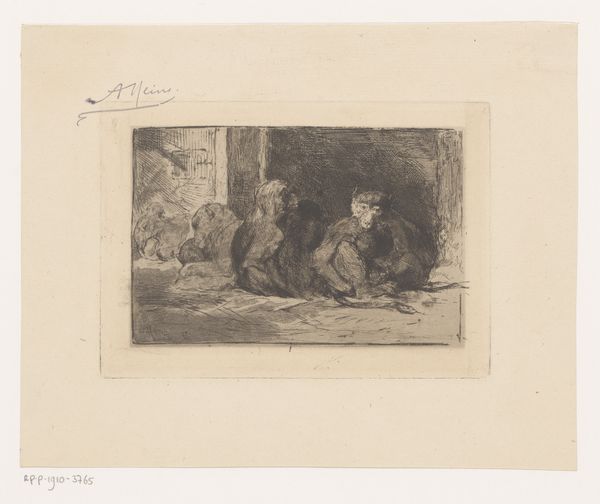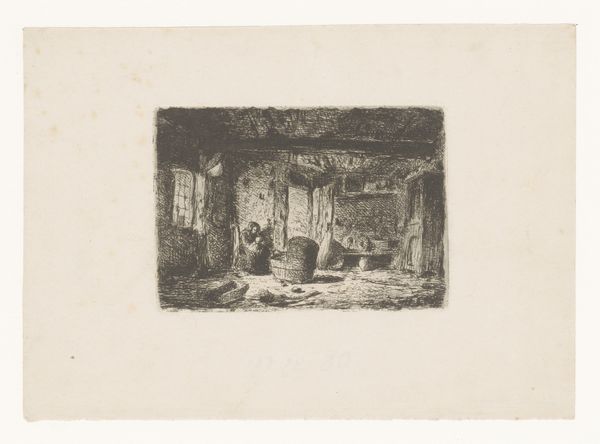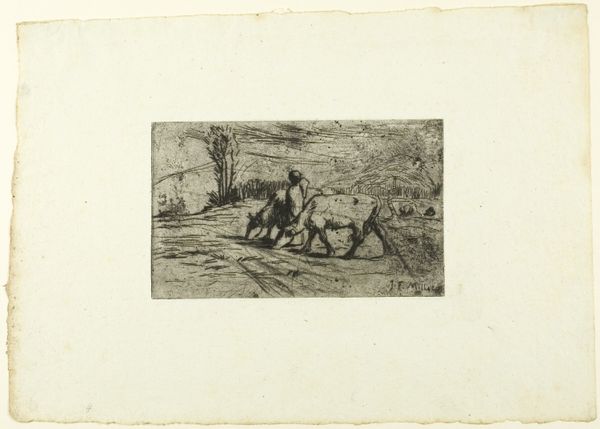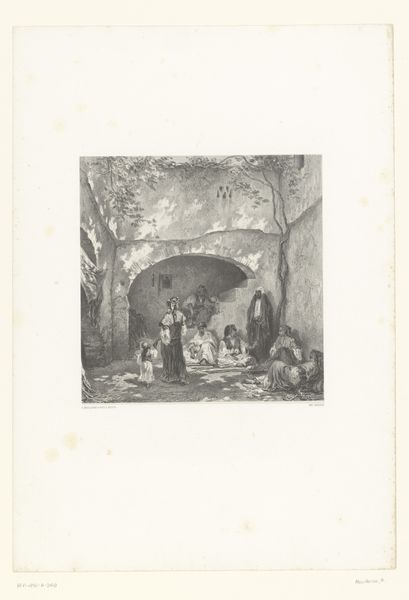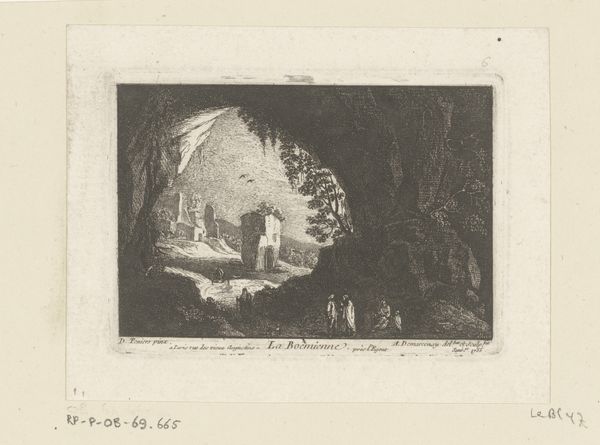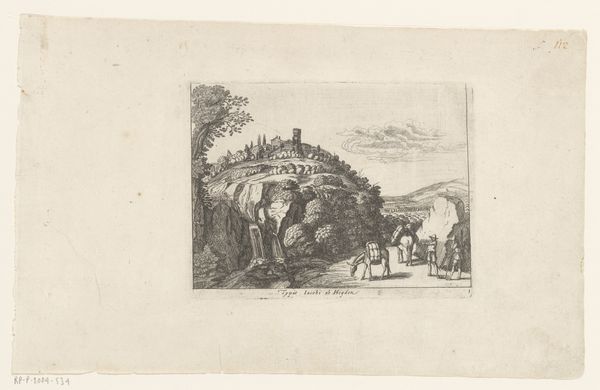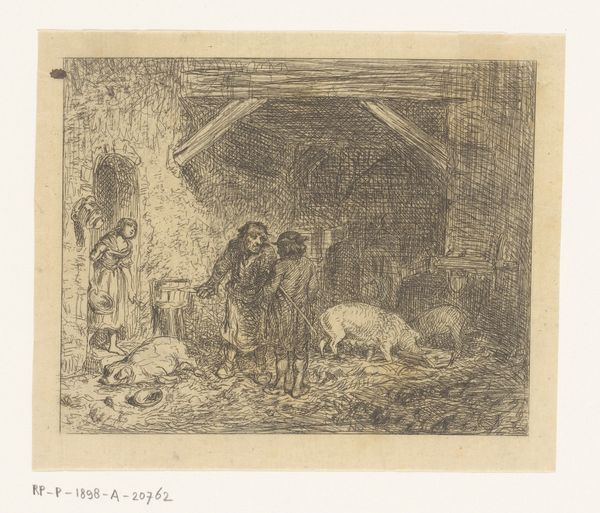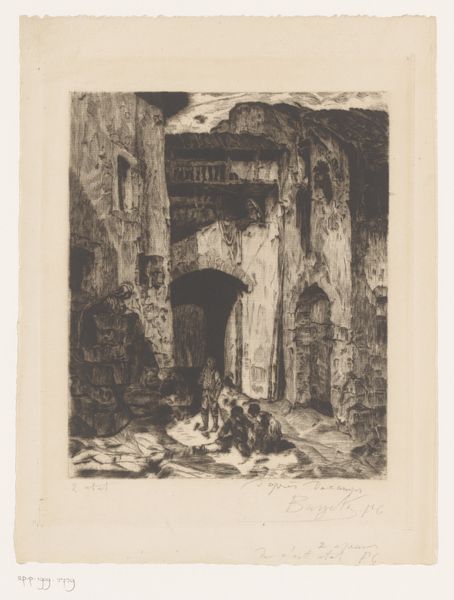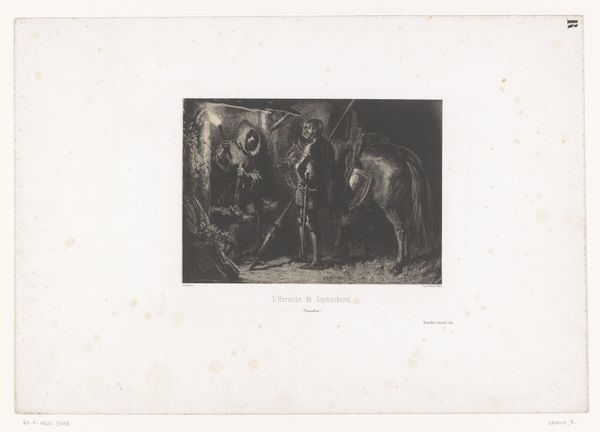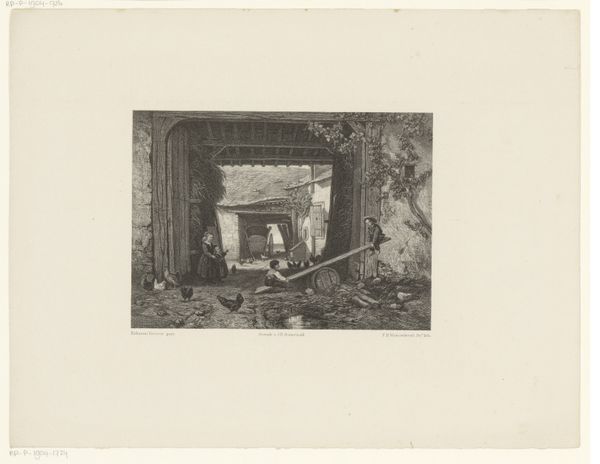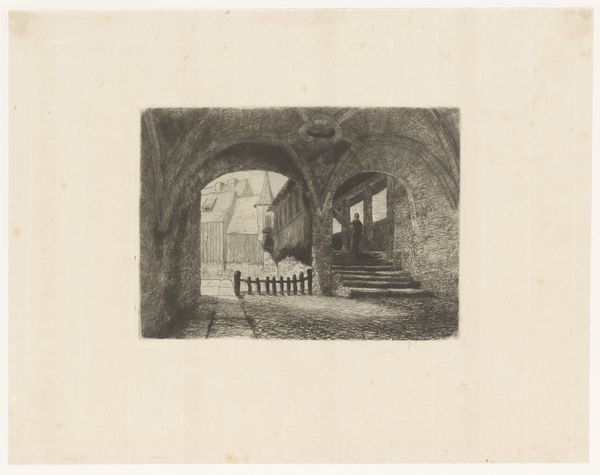
drawing, print, etching, paper
#
drawing
# print
#
etching
#
paper
#
genre-painting
#
history-painting
#
realism
Dimensions: 98 × 120 mm (image); 115 × 140 mm (plate); 183 × 248 mm (sheet)
Copyright: Public Domain
Curator: Let’s take a moment to look at Charles Jacque’s "The Pig Slaughterers," an etching dating back to 1844. What’s your initial take? Editor: Stark. There's a definite rawness in the texture, that stark contrast between light and shadow seems to accentuate the brutality of the scene. Curator: Absolutely, and that brutality connects us to socio-economic realities of the time. Jacque lived through considerable political and social upheaval in France. Representations of peasant life often reflect anxieties surrounding class, labor, and industrialization. Note the role of women in the left side, carrying what appears to be water for cleaning. Gendered labor becomes extremely visible in these genre paintings. Editor: I'm more struck by the composition. The heavy beams of the structure create a frame within a frame, directing the eye towards the pigs and the shadowy figures beyond. The light catches those central figures; almost drawing the focus there while the actual slaughter is in shadows. The artist uses the medium to maximum effect with very different line weights and cross hatching creating tonal contrasts, all in service of creating focal points, in my view. Curator: True, the artistic technique is worth discussing. The etching lines build depth and dimension. However, consider that representations like these helped to solidify perceptions of rural life for urban audiences. They reinforce notions of poverty and pre-industrial conditions as a natural component of life in the rural sphere. Who benefits when art romanticizes rural labor? Editor: An important question, but even within the somewhat stark "realism," I see formal relationships. The bodies of the pigs mirror each other in form, anchoring that space between the men and women while that beam creates depth; so much in that composition that I am compelled to keep observing the image. Curator: Indeed, and I think it's important to acknowledge both those aesthetic qualities, as well as considering the implications of its cultural portrayal. It's a work that lingers in the mind, forcing you to look and consider broader implications, both artistic and societal. Editor: And its raw visual energy encourages the viewer to consider this tableau beyond whatever socio-historic understanding can offer to the viewer. Thanks for pointing out its critical socio-political impact, it really brings added context to the piece.
Comments
No comments
Be the first to comment and join the conversation on the ultimate creative platform.
